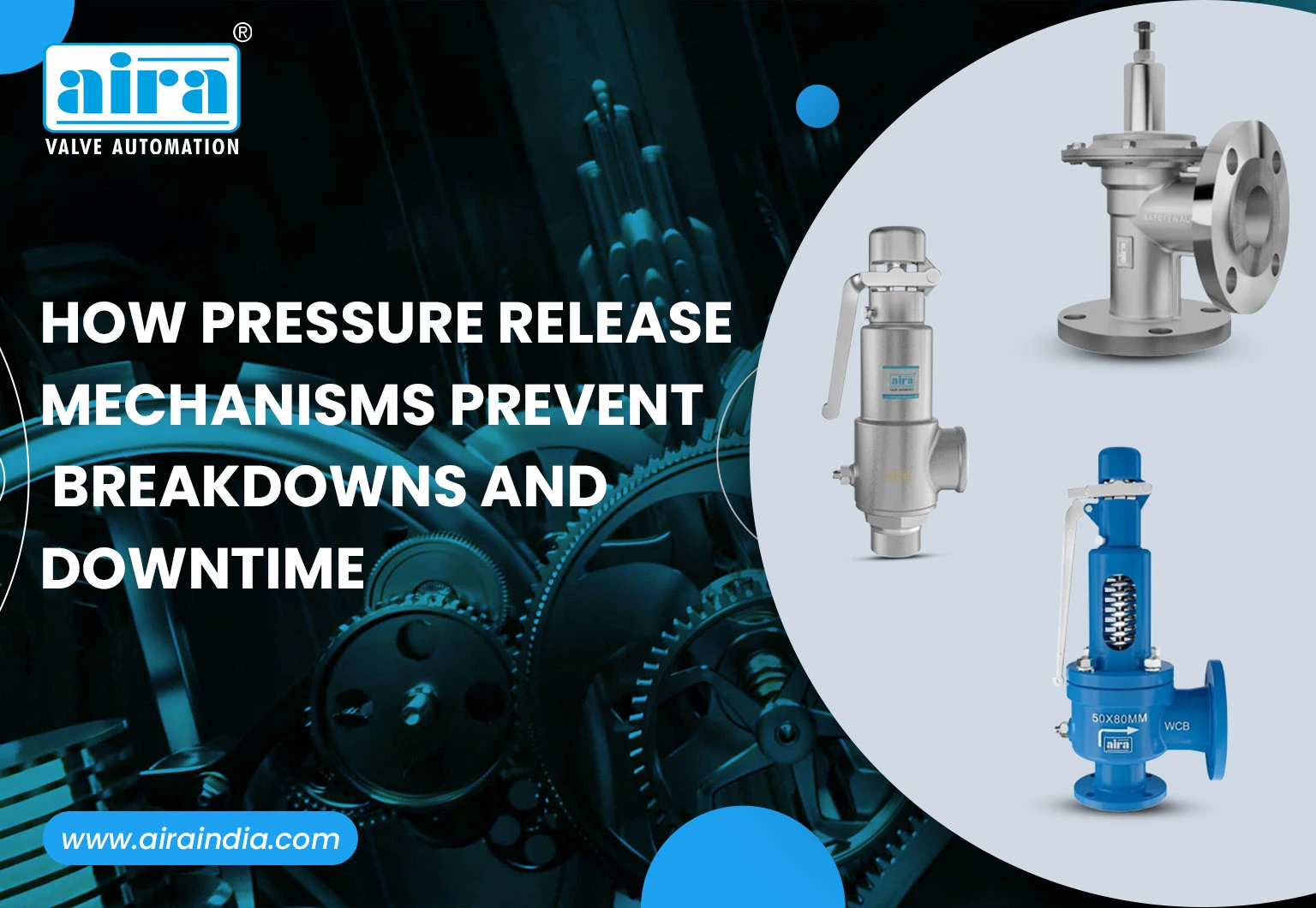In every industrial setup, it is important to maintain the right pressure, from manufacturing plants to chemical processing units. Pipelines and systems often work under high pressure, and even the smallest imbalance can turn into a large risk. The uncontrolled pressure not only leads to leaks or expensive downtime but can also cause severe system failures that affect overall productivity.
This is where the PRV valve plays an important role. By releasing additional pressure at the right time, it ensures smooth operation, protects the equipment, and protects the workers. At Aira Euro Automation, we design solutions that combine safety with efficiency, helping industries run without any interruption.
How Pressure Release Mechanisms Work in Modern Pipelines
The idea behind a pressure relief system is simple yet powerful. When the pressure inside a pipeline increases beyond safe levels, the system detects it and quickly releases the excess. This prevents the build-up from turning into a big risk.
Different types of release mechanisms are used in industries. Some rely on spring-loaded designs, others work with pilot-operated controls, and some use diaphragm-type systems. Each method has a goal to maintain balance and protect the equipment.
PRV valve, also known as a pressure relief valve or pipeline safety valve, is at the heart of this system. Whether it is in chemical plants, water treatment facilities, or oil and gas pipelines, these valves act as silent parents, ensuring that the operations remain safe and smooth.
Protecting Equipment and Preventing Downtime
Equipment in industries is one of the most common reasons behind failure. Pumps, compressors, and even valves can cause severe damage to themselves. If the pressure is not controlled in time, there is often an expensive repair or replacement.
This is the place where the PRV valve proves its importance. Acting as the first line of defense, an industrial PRV helps reduce risks by releasing additional pressure before damaging the system. From steam pipelines to industrial HVAC units and fluid processing lines, these valves are relied on for various applications.
Also, read The Purpose of Safety Valve
By ensuring the level of safe pressure, a pressure protection valve not only reduces the need for emergency maintenance but also protects operational continuity, saving industries valuable time and money.
Key Features of Effective Pressure Release Systems
An effective pressure release system is created to respond immediately when spikes are made, ensuring that operations remain safe. Modern design allows for adjustable set pressure, giving industries accurate control based on their unique needs. To withstand a hard environment, these systems are made with corrosion-resistant and durable materials that promise long-term reliability.
Many industries also integrate these systems with automated monitoring devices, enabling future maintenance before issues arise. A PRV valve is central to this setup, working as a reliable security valve that supports automated pressure control and keeps operations running smoothly.
Selecting the Right PRV Valve for Your System
Choosing the right PRV valve is necessary for both security and efficiency. Major factors to consider include the operating pressure of your system, the level of temperature, the type of fluid, and the contents of the valve. Selecting a pipeline safety valve that meets industry standards and certificates ensures long-term reliability.
Unlike normal pressure valves, an Industrial PRV is engineered to handle the demand position, offering strong performance and stability. By investing in high-quality valves, industries can prevent expensive downtime, reduce risks, and keep their systems operational without any interruption.
Maintenance Best Practices for Pressure Release Mechanisms
Pressure release mechanisms to keep reliable, industries must follow a regular maintenance routine. Regular inspection and timely testing help to identify problems quickly, while cleaning and renovation ensure that the valve continues to work at the right set pressure. It is equally important to avoid the idelines or disable the valve, as it can cause a severe threat to the system.
Certified Using PRV valve not only guarantees compliance with industry standards, but security valve maintenance is made easy and more effective, which helps industries to achieve long-term protection and uninterrupted operations.
Conclusion
Pressure release mechanisms are required to prevent breakdown and reduce expensive downtime. Investing in high-quality PRV valves ensures that the system is safe, efficient, and reliable under demand conditions. Whether it is a pipeline safety valve or a special industrial PRV, the correct option makes all the difference.
In Aira Euro Automation, we only find out our wide range of reliable PRV valves designed for industrial pipelines.
